November 6, 2024
CNC machine tool reliability technology research progress
CNC machine tools are the core equipment of the equipment manufacturing industry, its technical level directly reflects the comprehensive strength of a country’s manufacturing industry. Since 2002, China has become the world’s largest consumer and importer of machine tools for 10 consecutive years. Domestic CNC machine tools have made significant progress in accuracy, speed, multi-axis linkage, and other advanced functions. However, reliability, especially in the reliability of high-end machine tools, there is still a large gap at the international level. The low market share of domestic CNC machine tools, especially in the mid and high-end markets, is due to industry technical bottlenecks.
CNC machine tools are complex systems, and their reliability issues are more intricate than traditional electronic or mechanical products. Unlike electronic and mechanical products with established reliability systems, CNC machine tools have weaker reliability design and testing foundations. Domestic CNC machine tool reliability research started late, with limited involvement and resources, and is still developing.
In countries like Germany and Japan, multinational machine tool companies view advanced CNC machine tool reliability design and testing technologies as key competitive advantages. Improving CNC machine tool reliability is not only a technical issue but also a key challenge for enterprise management. This paper reviews the current technical status and research progress of CNC machine tool reliability.
Technical progress of CNC machine tool reliability
In the mid-1970s, as CNC machine tools became widely used in industrialized countries, machine tool failures gained attention. Stewart B. of the British Machine Tool Industry Association conducted on-site tests to collect and analyze failure data. In 1977, he published a report on the reliability of CNC machine tools at the Macclesfield International Reliability Conference. The report noted that machine tool failures caused 7.6% of downtime, with 1-2 failures occurring monthly on average. This study reveals the importance of CNC machine tool reliability.
In 1982, Soviet scholars published *Precision and Reliability of CNC Machine Tools*, summarizing CNC research and introducing reliability concepts and evaluation indices, marking early work in CNC machine tool reliability. Since then, Stewart and Plonikov’s research has laid the foundation for the international emphasis on CNC machine tool reliability technology.
The Beijing Machine Tool Research Institute and the former Jilin University of Technology were early pioneers in CNC machine tool reliability in China. Since the 1980s, they explored CNC machine tool reliability, characterization methods, and fatigue strength of parts. As CNC machine tools evolved in China, more experts focused on reliability modeling, failure analysis, design, testing, and maintainability, achieving significant results.
1. CNC machine tool reliability modeling
Reliability modeling is the basis of CNC machine tool reliability assessment, analysis, and design. 1960s, the United States released the M-HDBK-217, MIL-STD-781, MIL-STD-785, and other reliability standards, which provide for the reliability of the product modeling, expectations, and test methods. These standards laid the theoretical foundation for the reliability modeling of CNC machine tools.
In 1982, Keller et al. conducted a three-year field tracking test on 35 CNC machine tools, and used the lognormal distribution and the Weibull distribution function to fit the machine tool failure interval working time, thus establishing a reliability model for CNC machine tools and estimating the machine tool’s mean time between failures (MTBF).
Jilin University in China was the first to research the reliability modeling of CNC machine tools. In 1995, Jia et al. analyzed failure data from 24 CNC lathes, using the median rank method to calculate the failure interval distribution and fitting the data with an exponential distribution. Four years later, in 1999, Wang et al. analyzed 80 sets of failure data and found that various distribution functions could fit the data, but with a low confidence level. After hypothesis testing, they selected the lognormal distribution as the best fit.
The Weibull distribution is widely used in the reliability modeling of CNC machine tools because of its wide applicability. Its shape parameters can represent a variety of distribution types, such as exponential distribution, Rayleigh distribution, and so on. Dai Yi et al. found that the Weibull distribution better describes the failure interval than the exponential distribution by analyzing failure data from machining centers. Using maximum likelihood estimation, they calculated the Weibull parameters and verified the model’s applicability through hypothesis testing. The Weibull distribution also handles truncated data well, and they established a reliability model using the residual life function to effectively utilize truncated fault data.
As a complex electromechanical-hydraulic system, CNC machine tools have different failure rate trends at different stages of their life cycle. A single Weibull distribution may not accurately fit the time-between-failures distribution. To address this, Chen Dingsheng et al. from BUAA proposed a two-fold Weibull segmentation model, using the Weibull probabilistic paper chart method for parameter estimation and validating the model through fitting tests.
The model typically assumes machine tool failure is “repaired as new,” which doesn’t reflect reality. To address this, Zhiming Wang et al. from Shanghai Jiaotong University proposed modeling failure time with minimum repair using the non-hazardous Poisson process (NHPP) and boundary intensity process (BIP). The model utilizes Fisher’s information matrix method for parameter estimation, and point estimation and interval estimation are given.
Reliability tends to degrade as CNC machine tools operate for longer periods and the failure rate of a machine tool is no longer constant when it is in a period of occasional failures. Previous reliability models based only on the time between failures cannot accurately reflect this degradation process. Yang Zhaojun et al. from Jilin University proposed a dynamic reliability model that better describes a CNC machine tool’s reliability by considering the time and sequence of failures. They modeled 18 machining centers as examples and revealed the law of its reliability change with working time.
Jeffrey et al. modeled CNC machine tool reliability degradation using NHCTMC and HCTSMC methods, providing a new approach to reliability studies.
CNC machine tool reliability modeling has evolved from simple to complex, from “repair as new” to “repair as old,” and from static to dynamic models, bringing it closer to actual engineering needs and providing a solid foundation for reliability design and analysis.
2. Failure Analysis of CNC Machine Tools
Failure analysis is a critical aspect of improving the reliability of CNC machine tools. It helps identify weaknesses in the system and provides valuable insights into failure prevention and design improvements. The two main methods used for failure analysis are Failure Mode, Effects, and Criticality Analysis (FMECA) and Fault Tree Analysis (FTA). Both techniques are essential for ensuring the smooth operation and longevity of CNC machines.
(1)FMECA of CNC Machine Tools
FMECA is an advanced form of Failure Mode and Effects Analysis (FMEA) that not only identifies failure modes but also evaluates their impact on the system’s reliability and the criticality of each failure. The FMECA methodology helps in eliminating or reducing the likelihood of failures, which is crucial for the optimization of CNC machine tools.
Origins and Development
FMEA was first introduced in the 1960s in the aerospace industry and was later adopted by the U.S. Navy and the Department of Defense. In the 1970s, standards were formulated, and FMECA became widely used. By the 1980s, Chinese researchers started applying this method to CNC machine tools. In 1987, FMECA was introduced to China’s defense and machinery industries, following U.S. standards.
Application in CNC Machine Tools
Researchers like Dai Yi and others have used traditional FMEA to analyze failures in vertical machining centers. They categorized failures by type, such as component damage, leaks, and system malfunctions. For instance, component failures accounted for 42.31% of failures, and liquid and oil leaks contributed 26.92%. This detailed analysis helped identify key problem areas, such as the spindle, tool magazine, lubrication system, and Z-axis feed system.
Subjective Errors in Expert Scoring
One common limitation in FMEA is the subjectivity in expert scoring (hazard, occurrence, detection). To mitigate this, Yang et al. introduced fuzzy logic to represent expert opinions, improving the accuracy of failure mode prioritization through weighted Euclidean distance algorithms.
FMECA Enhancements
FMECA extends FMEA by incorporating hazard analysis into the process. For instance, Yu Jie et al. identified CNC systems and turret tool holders as weak points with high failure risks. They recommended upgrading the CNC system and improving the tool holder design. Binbin Xu also enhanced FMECA by including maintenance impact in the analysis, using spatial diagrams to calculate risk values and identify weaknesses in CNC machines.
Expanding Applications
FMECA has been applied to early failure screening of chain tool magazines and robotic manipulators. Researchers like Jin Yuanyuan and Lu et al. expanded FMECA’s application to other CNC tool components, showing its versatility in analyzing different failure modes across various machine tool systems.
(2)TA of CNC Machine Tools
Fault Tree Analysis (FTA) is a deductive method used to identify the root causes of system failures. By constructing a fault tree, it is possible to trace the causes of failures from the top event (system failure) down to the basic causes (bottom events), thus aiding in fault diagnosis and system improvement.
Historical Development
FTA was first used by Bell Laboratories in 1961 for missile launch system reliability studies. Since then, FTA has become a fundamental technique for failure analysis in various industries, including CNC machine tools.
Challenges in CNC Machine Tool Applications
CNC machine tools are complex systems, and traditional FTA methods can be computationally intensive. To address this, researchers like Yu Jie and Chen Chuanhai used Binary Decision Diagram (BDD) technology to optimize fault tree modeling for CNC machines and hydraulic systems. This technology allows for more efficient analysis, even with large and complex systems.
FTA for Fault Diagnosis
Chen Zhangrong et al. at Soochow University applied FTA for CNC fault diagnosis. They developed a computer-based system that stores fault tree models and provides automatic diagnosis by identifying minimum cut sets. If a match is found, the system outputs diagnostic results; otherwise, manual input can be used to add new rules, improving the system’s accuracy.
Fuzzy Markov Model in FTA
A common issue with FTA is the uncertainty in the occurrence probabilities of bottom events. To resolve this, Li et al. used a fuzzy Markov model to analyze fault trees of CNC hydraulic systems. By incorporating fuzzy theory, they were able to derive uncertain information and calculate the fuzzy failure rate of the system, improving the reliability design of CNC tools.
(3)Integrating FMECA and FTA for Effective Failure Analysis
Both FMECA and FTA are integral to the failure analysis of CNC machine tools. Jilin University’s CNC Equipment Reliability Technology Team developed specialized software to integrate these methods. This software helps manage failure data, perform FMECA analysis, and assess CNC machine tool reliability. By combining both methodologies, it improves the accuracy and efficiency of failure analysis, enabling better decision-making and system design.
3. Reliability design of CNC machine tools
The design stage largely determines the reliability of CNC machine tools, an inherent aspect of product design. The development of probabilistic design theory for complex electromechanical systems is insufficient, and data like CNC load spectra are lacking. Researchers are working to achieve the desired reliability at the design stage, gradually forming a comprehensive design technology based on general reliability principles.
Jilin University’s Key Laboratory of CNC Equipment Reliability, in collaboration with Dalian Machine Tool Group and Shenyang Machine Tool Co., developed the Technical Specification for CNC Machine Tool Reliability Design, covering guidelines for reliability, distribution, and growth based on failure analysis.
(1) Reliability Design Guidelines
Reliability design guidelines summarize key principles to ensure product reliability and prevent past mistakes. Jilin University’s Key Laboratory of Reliability Technology for CNC Equipment, Shenyang Machine Tool Co., Ltd., and Dalian Machine Tool Group Co., Ltd. have integrated principles like standardization, simplification, redundancy, environmental resistance, maintainability, safety, and human factors into CNC machine tools, creating the “Reliability Design Guidelines for CNC Machine Tools,” which will evolve with further design and practice advancements.
(2) Reliability allocation design
CNC machine tool reliability allocation distributes the overall reliability index to subsystems, considering technology, system importance, task requirements, and maintenance level.
Yang Zhaojun from Jilin University proposed using fuzzy interval numbers for reliability allocation in CNC machine tools. By combining field test data and expert experience, they developed a model integrating interval analysis, fuzzy judgment, and hierarchical methods, assigning weights to factors such as failure frequency, hazard, repairability, complexity, technology level, and cost-effectiveness.
Yang Zhaojun from Jilin University proposed using fuzzy interval numbers to represent uncertainty in reliability allocation, addressing the challenge of defining many influencing factors. They developed a reliability allocation model for CNC machine tools, integrating interval analysis, fuzzy judgment, and hierarchical methods, with factors such as failure frequency, hazard, repairability, complexity, technology level, and cost-effectiveness.
Zhang Genbao et al. from Chongqing University introduced the concept of “task” in CNC machine tool reliability allocation. They developed a task profile model, applied fuzzy analysis to expert opinions and risks, and allocated reliability for CNC machine tools.
(3) Reliability growth design based on failure analysis
The reliability of CNC machine tools grows throughout their life cycle. Jilin University Mechanical Industry CNC Equipment Reliability Technology Team summarizes CNC machine tool reliability growth based on failure analysis in a block diagram, which outlines the life cycle process on the left and corresponding reliability technologies on the right. Through these technologies, the reliability of a CNC machine tool can grow in cycles.
Failure analysis-based reliability growth design is central to CNC machine tool reliability growth technology, with several key industry players applying and promoting it.
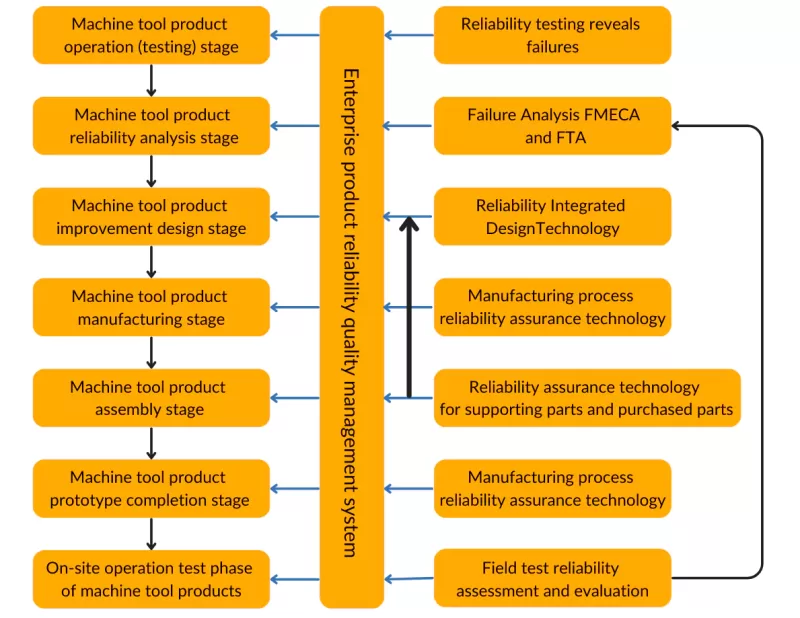
Figure 1 Reliability growth based on failure analysis growth technology route
4. Reliability test of CNC machine tools
A reliability test is the basic work to ensure the reliability of the product, and it is the objective basis for obtaining failure data, establishing a reliability model, and conducting failure analysis and design. The reliability test of CNC machine tools can be divided into two categories: the machine tool users’ on-site reliability test and the functional components of the laboratory bench reliability test.
(1) On-site reliability test
Field test belongs to the conventional stress test, usually involving a large sample of tests, can be comprehensive, fully exposed to the fault, and truly reflect the reliability level of CNC machine tools. The field test is mainly applicable to the reliability growth tests and reliability assessment tests. In this type of test, the machine tool is tested in the actual use environment, and it is possible to find out the possible failures of the product under specific use conditions.
Field tests have drawbacks such as long cycles, harsh environments, and difficulty controlling conditions. Since reliability bench tests for CNC machines are not widely used, field tests remain the primary method. Jilin University’s Key Laboratory of CNC Equipment Reliability Technology developed a Technical Specification for Field Tests and conducted numerous tests, gaining valuable experience.
(2) Laboratory bench reliability test
Laboratory tests test can carry out accelerates tests and fault active excitations tests. Compared to on-site tests, laboratory bench tests offer controllable conditions, hand high efficiency, and can simulate working conditions to identify potential failures, providing a scientific basis for design improvement and product optimization.
Since the 21st century, some domestic enterprises and universities have developed key components for reliability test rigs, enabling air rotation tests that offer a controllable, efficient environment for assessing and improving CNC machine tool components’ reliability.
(3) Acceleration test and working condition simulation test
In 2009, Jilin University’s Key Laboratory of CNC Equipment Reliability Technology began developing a reliability test system for CNC machine tool components based on accelerated testing, ensuring the failure mode and mechanism remain unchanged and meet requirements for load type, size, speed, frequency, and durability.
Jilin University has developed a test system for key CNC machine tool components with working condition simulation, based on automobile engine reliability testing principles. For example, the reliability test systems of the electric spindle (Fig. 2), power servo tool holder (Fig. 3), turret tool holder (Fig. 4), disk tool magazine (Fig. 5), and chain tool magazine (Fig. 6) are equipped with electro-hydraulic servo dynamic cutting force simulation loading and dynamometer torque loading functions. These functions break through the previous limitations of not being able to conduct working condition simulation tests in China.
These achievements solved technical problems and led to the authorization of several national patents, widely applied by leading machine tool enterprises. The innovative test methods significantly improved CNC machine tool reliability, promoting industry-wide technological progress.
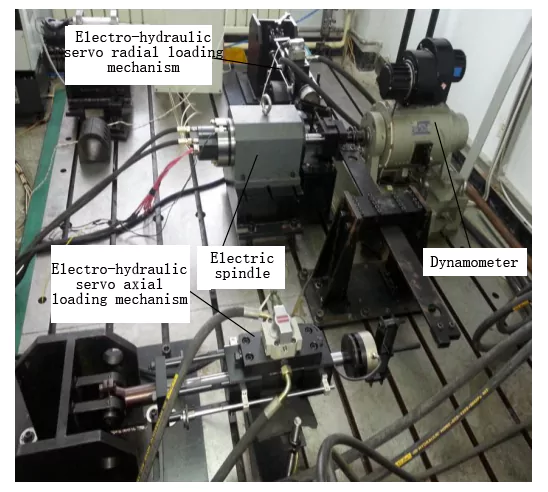
Fig. 2 Electrospindle Reliability Test System
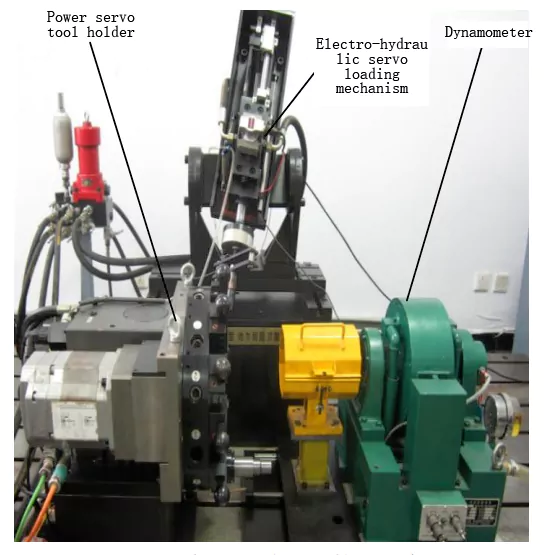
Fig. 3 Power servo tool holder reliability test system
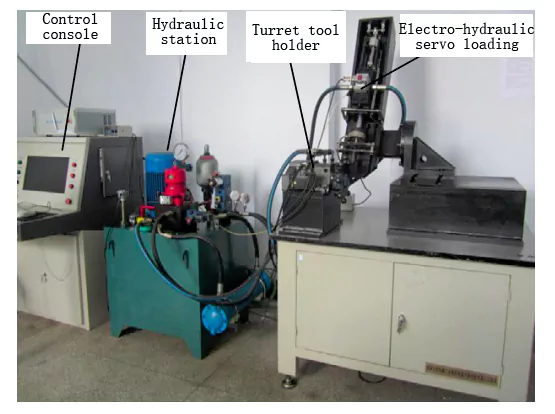
Fig. 4 Reliability test system of the turret tool holder
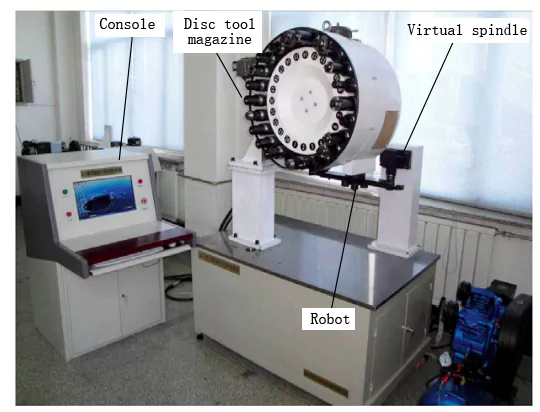
Fig. 5 Reliability test system of disk-type tool changer
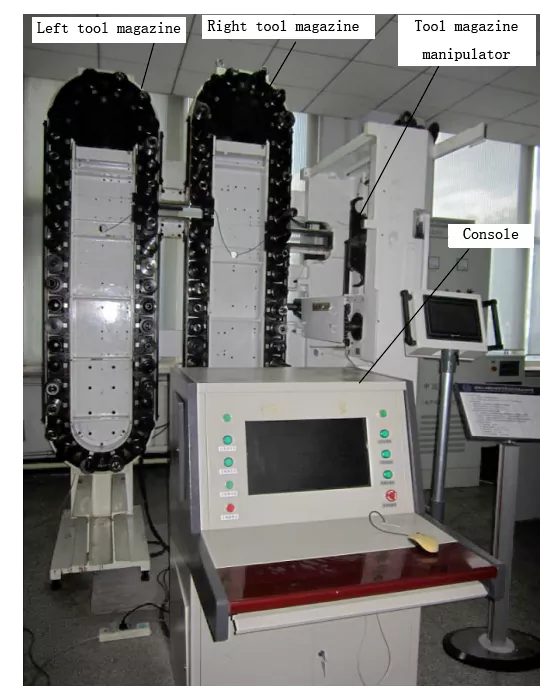
Figure 6 Chain tool changer reliability test system
5. Reliability of CNC machine tool technology development dynamics
CNC machine tool reliability technology has made significant progress in recent years, and presents the following major developments:
(1) Reliability modeling development
Researchers have improved the traditional “repair as old” assumption in CNC machine tool reliability modeling to better reflect performance degradation and failure mechanisms, helping engineers predict long-term reliability and take preventive measures.
(2) Advances in Failure Analysis Methods
In failure analysis, FMEA is evolving into FMECA, adding severity evaluation to improve accuracy and identify machine tool reliability weaknesses. Fault Tree Analysis (FTA) is also widely used in computer-aided fault diagnosis, showing promise in intelligent fault detection and automated warning.
(3) Comprehensive development of reliability design
The reliability design of CNC machine tools focuses on “reliability design guidelines, reliability distribution design, and reliability growth design.” It aims to ensure overall reliability from the design stage, allocating and adjusting reliability indicators for each subsystem to foster continuous improvement. This approach, centered on failure analysis and reliability growth technology, helps maintain stable performance and enhance reliability throughout the machine tool’s lifecycle.
(4) Breakthrough in Reliability Test Technology
The development of reliability test systems for CNC components, like electric spindles and power servo tool holders, simulating real working conditions, has become a research hotspot, enabling efficient acceleration and fault excitation tests to improve accuracy and effectiveness. Accelerated test technology also shortens test cycles, speeding up new product development and optimization.
(5) Remote monitoring and intelligent development
With the advancement of CNC machine tools’ intelligence and networking, remote monitoring and early warning technology have become key in improving CNC reliability. CNC machines use sensors and IoT to monitor their status, upload data to the cloud, and predict faults, reducing downtime and improving reliability.
Problems in the research of machine tool reliability technology
Despite advancements, CNC machine tool reliability lags behind that of industrially developed countries, with key issues remaining.
1. Fewer scholars and organizations in the research of CNC machine tool reliability
CNC machine tool failure mechanisms are complex and repairable, requiring cross-disciplinary research with long cycles, high costs, and slow results. This makes reliability research technically challenging and dependent on long-term academic and industry cooperation. Domestic research institutions invest limited resources in CNC machine tool reliability, resulting in a lack of specialized institutions and an incomplete technical system. Relevant departments should increase investment, provide policy guidance, and enhance domestic research cooperation.
2. Weak accumulation of reliability data of CNC machine tools
The reliability data of CNC machine tools not only includes failure data but also includes maintenance data and load data. Currently, although we have accumulated some failure and maintenance data for CNC machine tools, we severely lack load data. Existing data are limited to specific models and industries, hindering the development of load spectra for CNC tools and components. This limits reliability design and prevents probabilistic analysis, resulting in product reliability issues.
3. Insufficient research on the failure mechanism of CNC machine tools
Failure mechanism research uses theoretical and experimental methods to identify the physical or chemical causes of product failure. Studies often assume failures are independent, using machine tool failure data for reliability modeling and hazard analysis. Based on the results, we replace parts or make structural design improvements. Insufficient research on failure mechanisms and their causes can lead to excessive, costly, or ineffective improvements.
4. Heavy machine tools, light functional components
CNC machine tools consist of various functional components, CNC systems, and support structures. The key functional components closely determine the reliability of the machine tool. In developed countries like Germany, Japan, and Switzerland, ensuring the reliability of these components is the key technical approach to guaranteeing CNC machine tool reliability.s of the enterprise’s weak technical capabilities, most of the products are in the low-end of the low-cost competition stage makes the research institutions focus on machine tool machine.
The reliability of the machine is typically studied through field tracking tests, requiring test equipment with a low intervention threshold. Studying the reliability of functional components requires independent bench test equipment, making intervention difficult and discouraging some researchers.
5. CNC machine tool maintenance and availability of insufficient importance
Users in the reliability of the product’s highest demand are “to be used when that can be used”. CNC machine tools are designed for long operation and easy restoration, requiring both high reliability and maintainability. However, the industry and research mainly focus on reliability, neglecting maintenance and availability. Although some studies address this, they still don’t fully meet users’ needs.
Conclusion and Outlook
CNC machine tool reliability research has advanced over 30 years, focusing on modeling, fault analysis, design, and testing. These developments have enhanced product reliability and supported upgrades in the machine tool industry. Key research areas include dynamic modeling, intelligent fault tree applications, integrated design and component reliability, accelerated testing, and remote failure monitoring.
Despite progress in CNC machine tool reliability research, data is limited, and studies on failure mechanisms, maintenance, and usability are insufficient. These issues should be addressed through policy guidance and expert input to attract more researchers and refine the research focus.
CNC machine tool reliability technology is now a key focus in the industry, and improving its reliability is crucial. Based on the development trends and industry needs, the main technical goals should be:
We should enhance CNC machine tool reliability across its entire life cycle, including development, testing, design, manufacturing, installation, commissioning, troubleshooting, transportation, maintenance, and preventive strategies.
We should build the reliability technology system of CNC machine tools. Through long-term research on CNC machine tool reliability, we develop specifications, standards, and a dynamic database covering the entire lifecycle of core technologies, forming an industry-specific reliability system. Product reliability technology system.
CNC machine tool reliability demand comes from enterprises, where technology research and application occur. Machine tool enterprises should establish a reliable technology management system to ensure effective industry-university-research cooperation and application of results. At the same time, continue to improve the reliability of machine tool enterprises’ independent research and development capabilities, so that enterprises gradually become the main body of technology research and development of CNC machine tool reliability.